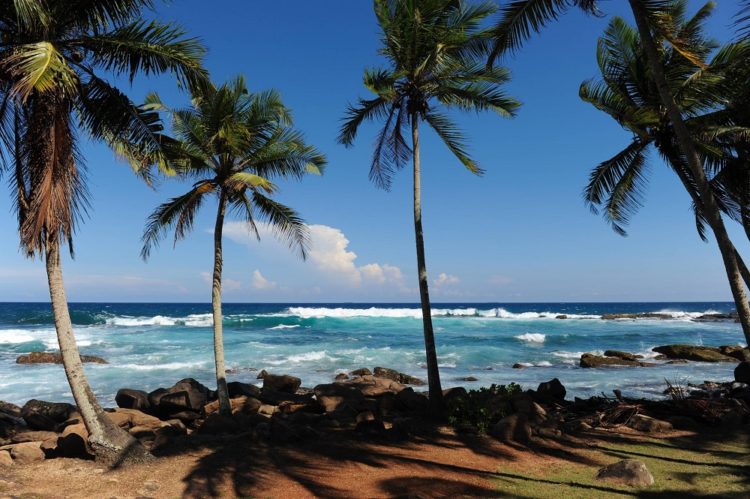ByPramuk Perera
AUCKLAND: New Zealand is planning to establish formal diplomatic relations with Colombo this year. NZTE is planning another trade mission to Sri Lanka. Having had several visits to this tropical island during his term, former PM John Key appeared to be a big supporter of Sri Lanka. PM Jacinda Ardern may enjoy watching the elephants, walking on golden beaches and the taste of pure Ceylon tea if she visits to open diplomatic relations in Colombo. Connecting one of the busiest shipping routes in the world, Sri Lanka’s geographic location links the east and west in the spice routes, also known as maritime silk roads. Most importantly Sri Lanka may open a strategic trade channel for NZ exporters to enter into the South Asian market.
Objectives
One of the key objectives of NZ’s Sri Lanka business strategy may be opening a trade channel to the rest of South Asia. Although South Asia has a huge market, Sri Lanka is relatively a small one. Therefore, the objectives of NZ’s Sri Lanka business strategy should go beyond Sri Lanka to cover all of South Asia – especially India. It should underpin the NZ government’s aim to grow NZ exports from 30 per cent to 40 per cent of gross domestic product (GDP) by 2025.
Market
South Asia comprises Afghanistan, Bangladesh, Bhutan, India, Maldives, Nepal, Pakistan and Sri Lanka. It covers 20 per cent of Asia’s land area and is home to the largest proportion of its population. Thanks to India, South Asia’s GDP in 2016 was nearly US$3 trillion ($4.05t). However, Sri Lanka is home to only 21 million people. It is a small island with a land area of 63,000sq km. Although, Sri Lanka’s GDP in 2016 was over US$80 billion, all the other South Asian countries (except Afghanistan and Maldives) expect higher GDP growth than Sri Lanka in 2018.
Differentiation
In an era where everyone is targeting the Asian market due to its growth and population, NZ has to differentiate itself in South Asia to become successful. In Sri Lanka people may know about NZ as a cricket-playing nation. Since rugby is also popular in Sri Lanka, they may also admire the All Blacks. Sri Lankans may know that Fonterra dairy products are from NZ. But NZ is not just sports and dairy. NZ has a lot to offer to Sri Lanka and South Asia. NZ may need to build a country-level message to promise what NZ can offer to Sri Lanka as well as to South Asia. That promise will ultimately be NZ’s brand in South Asia.
Goods and services
In 2016, NZ and South Asia recorded over $2b of goods trade. Goods exports and imports were $1.2b and $800 million respectively. By mid-2016 NZ and South Asia recorded over $1.4b in services trade. NZ exported over $1.2b and imported $260m worth of services. NZ goods exported Sri Lanka were worth $239m. In contrast, goods imported fromSri Lanka were worth $47m.
In terms of NZ exports dairy may lead the table. But NZ may benefit more by thinking beyond just exporting.
Sri Lanka can be a location for value addition.The Sri Lankan agricultural sector may look for new technologies and plantation methods that can be provided by Kiwi agricultural specialists. Although not very well known, NZ also appears to have a successful information communications technology sector and Sri Lanka may provide a base to expand that business in South Asia.
Struggling Sri Lankan airlines may welcome some consultancy from a leading airline such as Air New Zealand. NZ can also be a promising destination for Sri Lankans looking for tertiary level education. Entering a government university in Sri Lanka is an extremely competitive task and only the best minority receive a place at one . Therefore the majority has to look for other options and NZ can be one such destination.
Fonterra has been in business in Sri Lanka for a few decades. It has been providing a considerable number of employment opportunities and investments to Sri Lanka and may be in a position to share market intelligence with other NZ firms.
Business model
Sri Lanka’s existing trade agreements in South Asia can be the business model to gain a gateway to South Asia. Sri Lanka already has two bilateral trade agreements with India and Pakistan. Sri Lanka is also a part of the Agreement on South Asian Free Trade Area, South Asian Association for Regional Cooperation and the Asia Pacific Trade Agreement. All these agreements provide trade channels – mainly to South Asia. NZ may be able to capitalise on these channels by having NZ firms expand their business in Sri Lanka.
The India Sri Lanka Trade Agreement can be a most important agreement for NZ. There may be attempts to expand this agreement further to make it more comprehensive. India was the largest trade partner of Sri Lanka in 2016. In 2016 two-way goods trade was over US$4.5b. But Sri Lanka was only India’s 38th largest goods trade partner in 2016.
India is an important market for New Zealand, but maintains high tariff levels such as more than a 30 per cent average tariff on agricultural goods. It is the 17th largest goods trade partner of NZ. In contrast, NZ is the 72nd largest goods trading partner of India. India expects over 7 per cent GDP growth in the next couple of years and that may open many opportunities for foreign firms. Although NZ and India are negotiating a trade agreement, it seems like the two countries may take a considerable time to conclude this agreement. A couple of key objectives of NZ’s India Strategy was to grow NZ goods exports to at least $2b per year by 2015 and grow services trade by an average of 20 per cent a year. Although NZ has not yet achieved that goods export target there were tremendous increases in services trade in 2015 and 2016. Sri Lanka may provide a path to re-focus on the goods export target.
Other considerations
India can be a very attractive market, but NZ firms may need to consider whether they are in a position to supply the capacities India is looking for. Furthermore it is worthwhile for NZ firms to consider whether they have the skills and capabilities to navigate through the complications massive markets such as India inherit. In contrast, Sri Lanka can be a more manageable market. Furthermore, NZ firms may need to invest in research and development to understand the South Asian market and to customise their products and services according to South Asian consumer needs and wants. The success of the NZ business strategy in Sri Lanka may depend on how well NZ can understand the people, structure, incentives and culture of Sri Lanka. That may require in-depth knowledge of Sri Lanka and its history. NZ needs to find a path to balance the national interests of both countries. Furthermore, the success of business cannot be a zero sum game. NZ, Sri Lanka and South Asia must all benefit from business relationships. (NZHerald)




